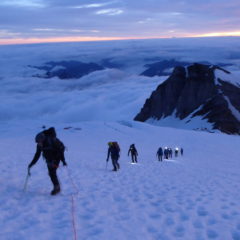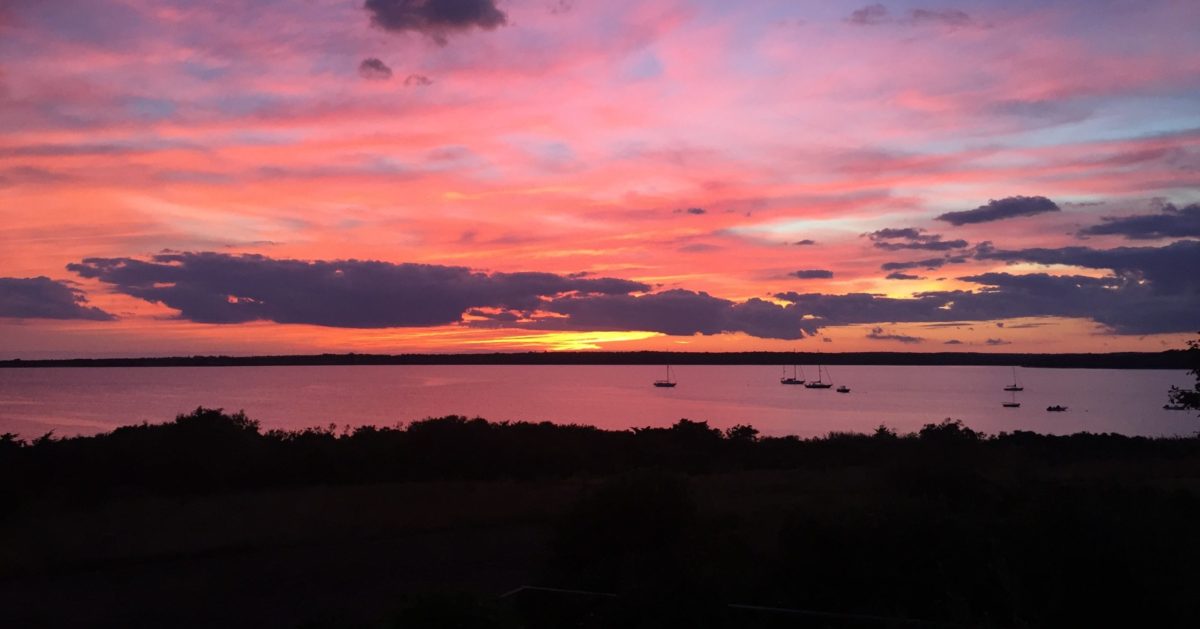It has been a month since Nepal shut down the Everest climbing season, Will and I carved our last backcountry ski turns in the Canadien Rockies, and we rushed back to Boston ahead of the U.S./Canada border closing. Since then, I have been sheltering at home with Jill, Holly, Will, and our beloved 14 year old yellow lab Maggie. (John is toughing it out by himself in San Francisco.) In addition to dealing with the daily challenges that confront us all, I have been trying to figure out what to do about my blown up gap year. I am happy to report that I have settled on Plan B.
My gap year is now a “gap year and a half”. I am going to target Everest in the spring of 2021, save the long distance sailing for later, and commit to another season of cross country ski racing. The World Masters Nordic Championships, held in Canmore, Alberta in March 2021, will serve as an overarching ski goal and rallying point for daily workouts. As during the past year, there will be a high degree of overlap between the training that gets me ready for ski racing and the training I need to do for Everest.
Like virtually all things in life, there are pros and cons. The primary cons are missing out on some extended sailing that I have long wanted to do, not getting to be on Everest right now, and attempting the mountain a year later at an age where every passing year matters physically. The primary pros are that my lifelong dream of climbing Everest remains alive, and I get to experience another year of dedicated training and cross country ski racing. As described in previous posts, returning to ski racing after a thirty year hiatus has proven to be deeply meaningful.
Plan B is of course dependent on how the COVID situation shakes out. It is not clear that climbing Everest a year from now will be advisable, or that the 2021 World Masters Nordic Championships will even be held. My Plan B may well get blown up just as Plan A did. I’ll deal with those possibilities down the road. In the meantime, simply having a plan and committing to it is helpful. The journey is in many ways as meaningful as the destination, perhaps more so. To that point:
The poster on my wall
Growing up, this poster was on my bedroom wall. I looked at it every day and it made an enduring impression. It’s title was “Everest, The West Ridge”.

The small figures at the bottom of the photo are Tom Hornbein and Willi Unsoeld, two American climbers who made history in 1963 with their epic first ascent of Everest’s west ridge. That is the west ridge towering above them: 9,000 vertical feet of technically challenging terrain, at extreme altitude, that no one had ever set foot on. Hornbein and Unsoeld ascended the ridge, traversed the summit, miraculously survived a night bivouacked high on the mountain, and descended the southeast ridge safely the following morning, (ultimately with a few less toes).
As striking to me as the photo was the quote at the bottom of the poster, a paraphrase of Goethe attributed to Scottish mountaineer W.H. Murray :
“WHATEVER YOU CAN DO, OR DREAM YOU CAN, BEGIN IT. BOLDNESS HAS GENIUS, POWER, AND MAGIC IN IT”
The combination of that photo and quote stuck with me; one of those childhood impressions that shape how you approach the adult world. It still does. Some back stories:
Willi Unsoeld , one of the climbers in the photo, was larger than life. He found in climbing an intense blend of physical and spiritual satisfaction, and eloquently articulated what this meant to him. A couple of great biographies have been written about him. He was also a friend of my father’s. The first time I went rock climbing, in the early 1970’s at Den Rock in Andover MA, Willi was at the top of the rope.
In 1948 at the age of 21, Willi hiked to the base of India’s second highest mountain, Nanda Devi. It was the most beautiful mountain he had ever seen and he vowed that, if he ever had a daughter, he would name her after the mountain. He did just that, and “Devi”Unsoeld was our family’s baby sitter in the early 1970’s. In 1976, Willi and Devi organized an expedition to climb the mountain for which Devi was named. Tragically, Devi died of altitude complications high on a ridgeline. Three years later, in yet more tragedy, Willi died in an avalanche while leading a group of college students on a winter ascent of Mount Ranier.
Those are some of the emotional connections I have with that poster. There is a lot going on there, not all of it supporting an uplifting argument for “why the risk inherent in mountaineering is worth it”. But that image of Willi and Tom Hornbein approaching the West Ridge, together with that quote, are as powerful for me today as they were fifty years ago. Together, they speak to the majesty, awe, and spiritual connection I find in the mountains, and the importance of dream fulfillment that has long been at the core of my desire to climb Mount Everest.
Present course and speed
So I have a plan that I am excited about, and following the plan is already paying dividends. In a world with much uncertainty and worry, daily workouts provide invaluable structure. Getting outdoors for a run or hike is, as usual, immensely nourishing. Knowing that my dreams are alive is reassuring.
And a topic for perhaps a future blog post: amid the dark clouds of COVID-19 are some rays of grace and beauty. Among the many dislocations that come with physical distancing, we find emotional connections and new sources of meaning. Amid devastating hardship and loss experienced by so many, we realize how lucky we are and count our blessings. I know we are all experiencing personal versions of this.
Yesterday it was pouring rain and super windy. The structure of “Plan B” dictated that I get out for a workout regardless of the weather. The woods were soaking wet, so I ran on the roads, which is abnormally pleasant these days given the lack of traffic. Three quarters of the way through the run, I was drenched to the skin but feeling great; proud of myself for being out there on such a nasty day. Through the rain torrents, I caught sight of another runner ahead of me, moving with unusually awkward motions. As I got closer, I tried to see what was going on. Then I realized. The runner had two artificial legs, starting at the hips. He had difficulty navigating around the deep puddles in the road so just plowed through them, moving purposefully. I was amazed by how powerfully he could generate forward momentum using just his hip muscles. I pulled alongside and he gave me a big smile. We exchanged commiseration and encouragement as the rain poured down.
As I ran the final mile home, my gap year situation was put in clear context, and the quote on that poster continued to echo.
You are all in my thoughts in these challenging times. Godspeed. We will get through this.

